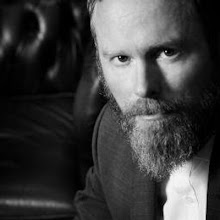Harold de Bree, Gordon Cheung, Jana Gunstheimer, Luke Jackson, Monica Ursina Jäger, Mark McGowan, Hugh Mendes, Svein Møxvold
Private View
Thursday November 5th 6.30pm – 8.30pm
Exhibition Dates
Friday November 6th – Saturday December 5th 2009
Gallery Hours
Wednesday – Saturday 11am – 6pm or by appointment
In 1921 Adolf Hitler called for a will to power when claiming ‘that freedom can eternally be only a consequence of power and that the source of power is the will’. In blaming Germany’s current and projected economic misery on the repatriation terms set out by the international community in the Versailles Treaty, Hitler sought to demonise the Jewish financial community and ridicule the ‘bolshevism’ of the left and ‘nationalism’ of the right. Consequently, Hitler aimed to re-establish Germany’s military might and imperial powerbase by promising to combine social welfare with nationalistic pride through the leadership of the National Socialist party. Throughout the decade the Nazi party continued to agitate and intimidate by using physical violence and unparalleled propaganda until they attained power in 1933, having presented two choices to the people of Germany: Future – the National Socialists; or Ruin – all other options.
Fundamental to Hitler’s rise to power were the devastating economic circumstances that Germany experienced post Word War I, providing unsettled and fertile grounds for the Nazi party. In our time the global economic crisis has again coincided with the rise of the far right throughout Europe as unemployment and immigration increase tension and resentment amongst local populations. The British National Party has secured a seat on the London Assembly as well as two European parliamentary seats; in September half of the eighty arrested in Birmingham’s race riots were Muslims and allied factions counter-protesting against the English Defence League; Hungary has witnessed a series of Roma and Gypsy killings that are considered the ‘most complicated and most serious series of murders in Hungarian history’; Lithuania, Bulgaria, the Czech Republic and Latvia have all suffered street protests, violence and arrests as their economies contract, and unemployment and inflation rise hand in hand.
Disaster and survival; apocalyptic forewarnings; democracy and fascism; power and communication; war and murder; reconstruction and re-enactment; these are the preoccupations of this cross-disciplinary selection of international artists from Britain, Germany, Netherlands, Norway and Switzerland. From de Bree’s mimetic remodelling of military hardware to Møxvold’s warnings against the terrifying consequences of extreme nationalism via Cheung and Jäger’s broader consumerist and environmental concerns; from Mendes’ relentless documentation of deceased historical figures to McGowan’s brazen re-enactment of Oswald Mosely’s ‘Battle of Cable Street’; and Jackson and Gunstheimer’s complex interweaving of ideology, rationality, reality and fiction, we are confronted with a group of European artists concerned with very European problems.
Tuesday, 27 October 2009
Subscribe to:
Post Comments (Atom)









.jpg)
No comments:
Post a Comment